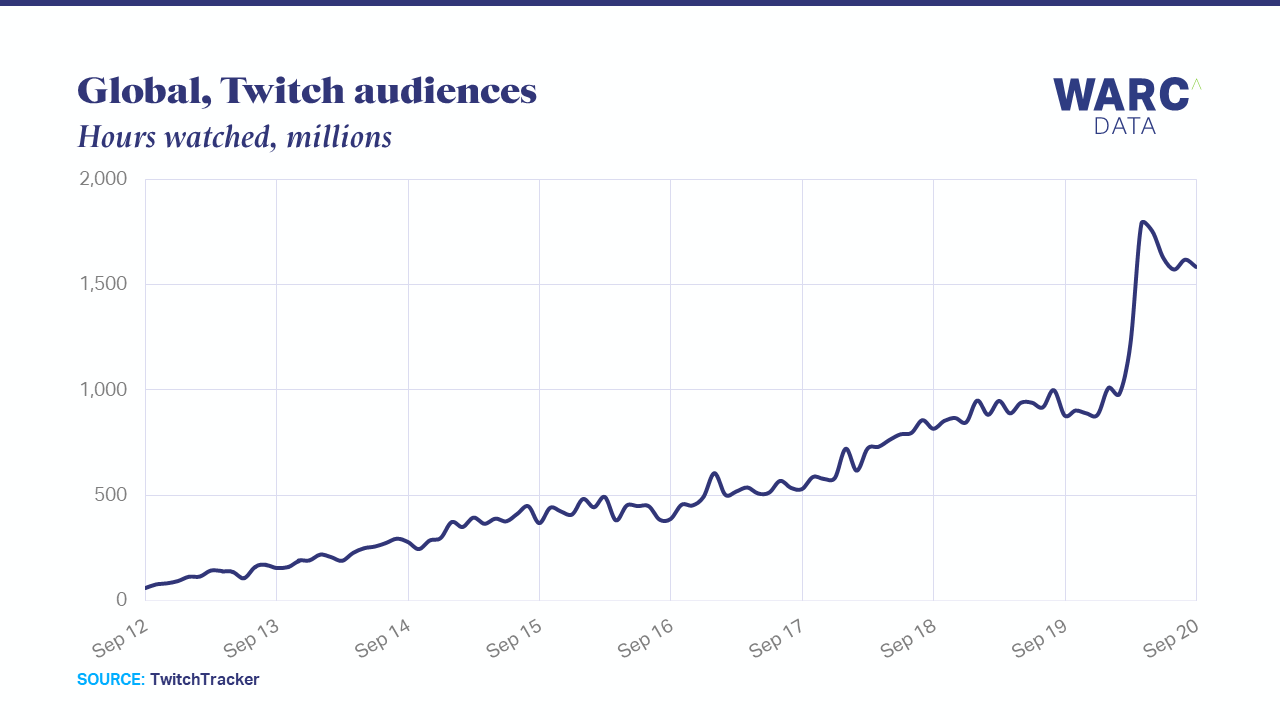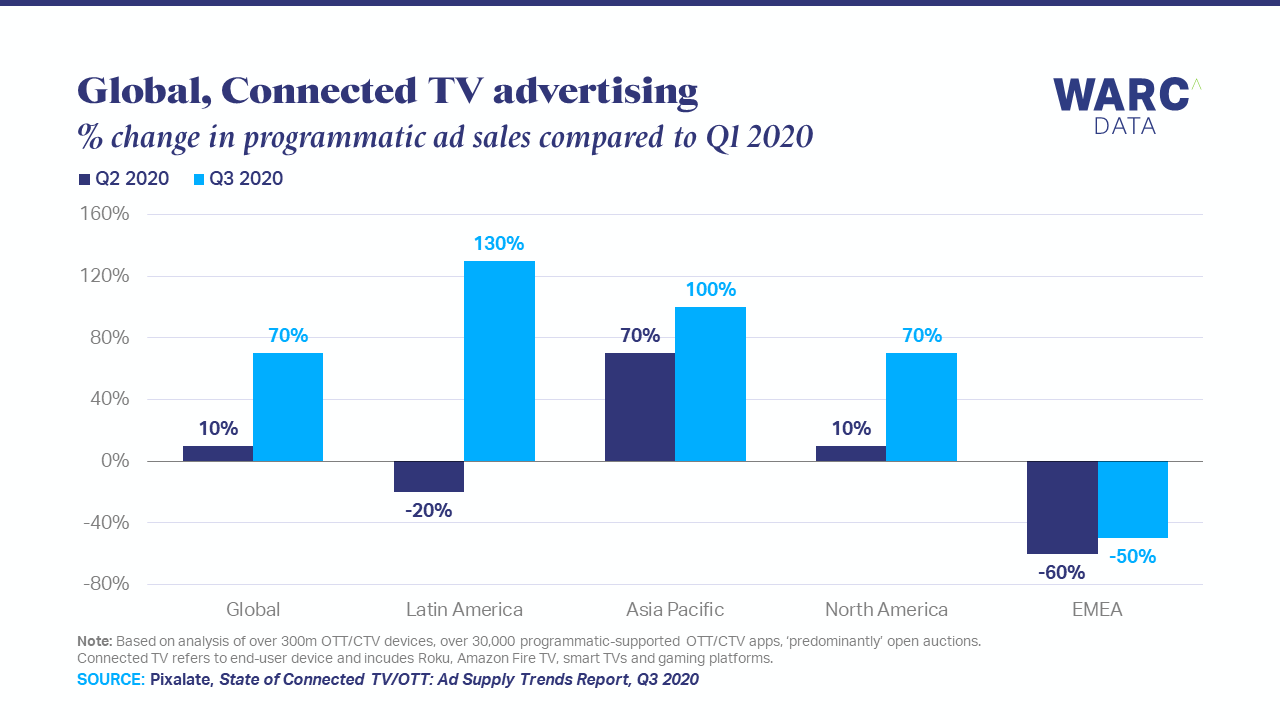This month: the numbers behind what happened with e-commerce, gaming and connected TV in 2020, and how to respond in 2021.
There has been no shortage of research, data and insight trying to make sense of 2020. WARC Data alone has published nearly 1,200 pieces of analysis between January and November, covering over 60 different markets and a whole host of marketing topics.
But it is the interpretation of this information that really counts, and the importance of knowledge as a means of navigating through uncertainty cannot be downplayed.
Our recent survey of over 1,000 practitioners for this year’s Marketer’s Toolkit finds, for example, that new consumer behaviours will have the biggest impact on strategy in 2021. With this in mind, here is a quick run through of three important consumer trends from 2020, and how best to approach them in the coming year.
For more insight on what next year holds, download WARC’s Marketers Toolkit 2021 and WARC Data’s Global Ad Trends: State of the Industry 2020/21.
E-commerce attracts new consumers, bigger baskets and far more brand investment
The growth of online shopping has been the story of 2020 for advertisers and we have observed three different trends playing out in this area.
At the most basic level, more people are shopping online. Amazon added one billion site visits between February and August while the number of mobile users on Alibaba’s Chinese retail marketplaces is rapidly approaching 900 million.
Not only are more people shopping online, they are also buying more. Consumer spend in the FMCG category is 46% higher online than when buying in store, per Nielsen. In Europe, snacks and personal care have seen the greatest e-commerce boost.

Brands are responding by investing more in e-commerce advertising. Much more. Globally, spend is expected to grow by 18.3% this year to equal $58.5bn. This compares to double-digit decline for offline media, the worst year on record in WARC’s 40-year history of market monitoring.
This boom in online shopping looks set to only sustain as well – two-thirds (67%) of marketers expect the shift to e-commerce to be a permanent one.
For e-commerce success in 2021, brands will need to recognise the ‘messy middle’ of decision making and improve their ‘digital availability’. Delivery and packaging are also becoming key touchpoints that can engage consumers, while social and livestreamed commerce, already popular in China and Southeast Asia but lagging in the West, will only grow in importance.
Gaming reaches a new level but some advertisers prove hesitant
Gaming audiences have seen continuous growth this year, though some brands are hesitant as getting the right strategy can be difficult.
Data from YouGov across 24 markets show that an average of two-thirds of consumers now play video or mobile games, rising to around three-quarters in the United States, Australia and Indonesia. This spans all age groups, with the share of Baby Boomers playing reaching two-thirds following the coronavirus outbreak.

The increase in activity looks set to continue as well. The number of hours watched on gaming-oriented streaming platform Twitch first topped 1.5bn in April and has remained above this level in each subsequent month.
There is a clear opportunity for brands as 36% of gamers say they tend to buy brands they have seen advertised, while gaming influencers on YouTube attract the most community engagement.
The reaction from advertisers, however, has been split. Brand investment in esports is expected to top $800m this year and two-fifths (38%) of marketers expect to spend more to advertise across gaming formats in 2021. However, 40% of brands also say they do not spend on this platform and have no plans to do so, the highest share across 13 channels monitored by WARC.
For brands tapping into this growing and engaged audience, it is vital to not interrupt the experience. Instead, integrating into the content and providing a clear benefit to gamers is key – US restaurant chain Chuck E. Cheese, Singaporean resort Sentosa Island, and luxury fashion retailer Net-A-Porter have all seen success with this approach in the hit game Animal Crossing: New Horizons.
The most popular games will change throughout 2021, so brands should consider building longer-term engagement by fostering sociable customer communities. Recognising the diversity within the channel is vital, too – only 27% of female Gen Z players identify as ‘gamers’.
Connected TV
Linear TV advertising is set to have a difficult 2020 and 2021, with global investment forecast to decline by 16.1% this year before seeing only mild growth next year. Connected TV, however, has been a bright spot and looks set to attract even more attention going forward.
Data from fraud management company Pixalate show that connected TV ad sales managed to grow by 10% in the second quarter of 2020 before accelerating to 70% growth in the third. Moreover, investment in Latin America and Asia Pacific has more than doubled this year.

This comes off the back of a widespread leap in consumption. Connected TVs now account for over a quarter (27%) of global YouTube activity, which is a jump from 16% the year before. Across all online video content in the United States, connected TVs are now as popular as mobile devices.
The rapidly growing importance of connected TVs is being reinforced by the surge in advertising-supported video-on-demand (AVOD) services.
While Netflix remains dominant, free but ad-supported video services are showing far quicker growth than their paid subscription (SVOD) competitors. In Europe, AVOD consumption rose by 29% between January and June 2020, more than double the rate of increase for SVOD (+13%). Activity in the United States and Asian markets show the same trend.
Pluto TV, owned by ViacomCBS and operating in over 20 countries, is one example of AVOD’s success this year. Aggregating content from more than 200 different licence partners allows the service to appeal to a wide variety of audiences, while positioning itself as “a digital product with TV feeling and a TV approach” has proven attractive to advertisers.
This gives brands a clear opportunity in 2021 to combine the personalisation of digital advertising with the emotional resonance of TV. Cosmetics manufacturer L'Oréal has seen value in using connected TV to drive incremental reach. However, advertisers need to understand the different viewing states of audiences across linear, AVOD and SVOD content for real success in 2021.

